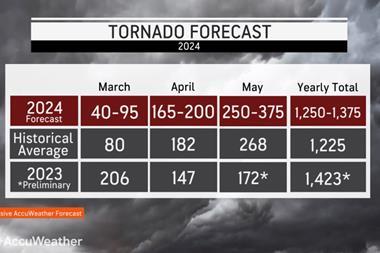Government of the most ‘disaster-impacted country in the world’ failed to provide adequate warnings, says RMS scientist
At the same time as Robert Muir-Wood (pictured) was taking part in a panel discussion at last week’s Singapore International Reinsurance Conference, the first forecasts for Super Typhoon Haiyan were just starting to surface.
The chief research officer at RMS, one of the world’s largest catastrophe modelling companies, was talking about challenges in mitigating rising natural catastrophe exposures. However, neither the discussion nor the forecasts prepared him for the deadly impact that Haiyan would have on the people of the Philippines.
As Muir-Wood sees it, typhoons are unavoidable, but the loss of life they can cause is not. “This kind of thing shouldn’t really happen; the world now knows now to prevent large-scale loss of life in cyclones,” he told StrategicRISK. “You are going to lose property, but it should at least be possible to save the people.”
Government embarrassed
Muir-Wood, who has a degree in Natural Sciences and a PhD in Earth Sciences from Cambridge University, believes it to be a failure on the part of the authorities. “I think the Philippines government itself will be embarrassed because in the past few years they’ve actually been doing a very good job at taking action to limit disasters,” he said.
People in low-lying areas were not informed that they were threatened by storm surges, Muir-Wood said. “I don’t think they did alert people in a way that they could have done to highlight that in low-lying communities people need to move further inland,” he said. “You can see that in the city of Tacloban there’s a huge amount of exposure just a few metres above sea level, so if you have storm surge of six or eight metres, there’s an enormous amount that is impacted by it.”
Worldwide centre of disaster impacts
Muir-Wood said that the Philippines was probably the most “disaster-impacted country in the world”, if you added up all the earthquakes, volcanic eruptions, floods, and super typhoons it experienced. “The eastern edge of the Philippines is the coastline most impacted by cat 5 tropical cyclones anywhere on earth,” he said.
“And if you look objectively at the intersection between exposed populations and the hazards, then Asia itself is at the worldwide centre of disaster impacts. Haiyan is a manifestation of that intersection of people and hazards.”
A lot of thinking needed to go into working out how best to protect communities on islands “where you can’t simply get everybody to move 50 miles inland”, Muir-Wood said. “In the US you’d evacuate the people at risk, but this is much more of a challenge when you’re on an island and there are few vehicles,” he said. “A small proportion of buildings like community centres need to be hardened to be able to withstand cat 5 winds and located high enough to avoid storm surges.”
Tough typhoon season
It has been a busy typhoon season in the west Pacific, with 28 tropical storms since June, of which 16 have reached typhoon status (cat 1-5) and seven have reached super typhoon status (cat 4-5). In October alone the region saw the formation of eight tropical storms, seven of which reached typhoon status.
Haiyan is the fourth typhoon and the fifth named storm to impact the Philippines in 2013, which is above the average of 2.3 typhoons and three named storms (since 1945) to affect the country by this point in the season.




















No comments yet